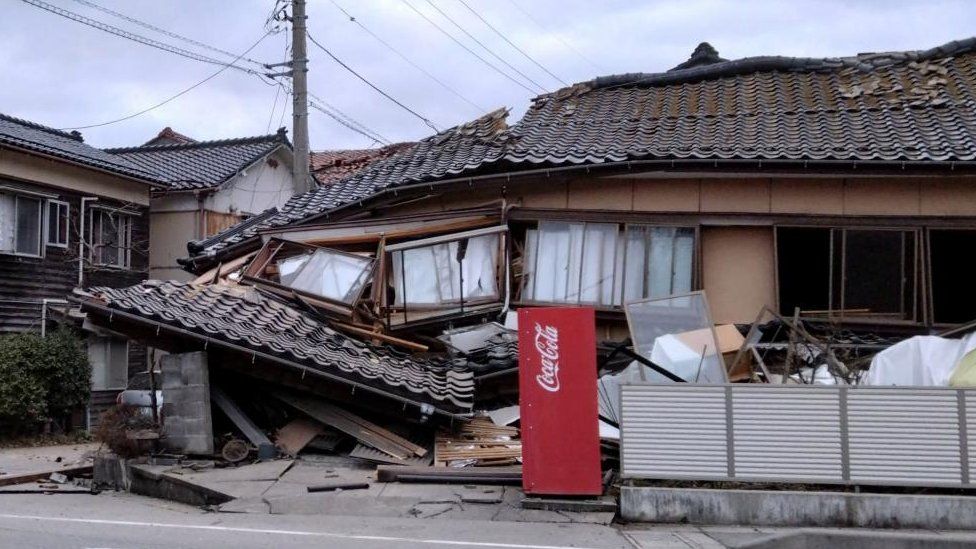Japan has urged people to evacuate to higher ground after a 7.6 magnitude earthquake struck its central region.
A major tsunami warning was issued for the coastal Noto area in Ishikawa, with warnings of waves as high as 5m (16ft). This was later downgraded to a tsunami warning, meaning waves could reach 3m.
Similar warnings were issued for the nearby Niigata and Toyama prefectures.
Japan’s Meteorological Agency (JMA) warned there could be further earthquakes in the coming days.
National broadcaster NHK urged affected viewers: “We realise your home, your belongings are all precious to you, but your lives are important above everything else. Run to the highest ground possible.”
People have posted videos of their homes and subway trains shaking during the earthquake on Monday, New Year’s Day.
A succession of 21 earthquakes registering 4.0 magnitude or stronger struck central Japan in just over 90 minutes on Monday, the JMA said. The strongest tremor hit at 16:10 local time (07:10 GMT).
Several local media reports said this was the first time a “major tsunami warning” was issued since 2011, when a powerful earthquake tore through north-eastern Japan and unleashed waves of up to 40m high.
Japan is one of the most seismically active nations on Earth, owing to its location on the so-called Pacific Ring of Fire, where many tectonic plates meet. The constant threat of earthquakes has led Japan to develop one of the world’s most sophisticated tsunami warning systems.

Major highways were closed near the epicentre of Monday’s quake and more than 36,000 households were left without power, according to utilities provider Hokuriku Electric Power.
There are several nuclear power plants in the affected areas, however Japan’s nuclear authority said there is “no risk of radioactivity leaking” from the facilities.

South Korea’s meteorological agency and Russia also issued tsunami warnings after the earthquake.
In 2011, Japan was hit by a 9.0 http://tehopeng.com/ magnitude earthquake and a resulting tsunami which tore through its north-eastern coastal communities, killing almost 18,000 people and displacing tens of thousands.
Those tsunami waves triggered a nuclear meltdown at the Fukushima power plant, causing the most serious nuclear accident since Chernobyl.